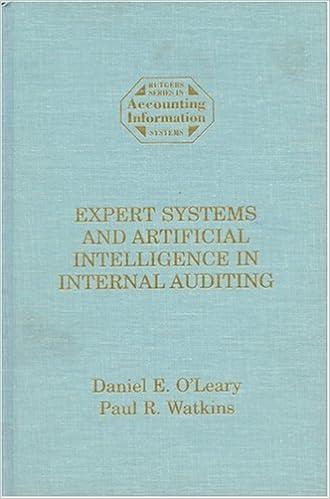Answered step by step
Verified Expert Solution
Question
1 Approved Answer
create a Cash Purchases Disbursements budget and an Operating Expense budget in the format provided with the information below Jun '20 6 mos total Imagine,
create a Cash Purchases Disbursements budget and an Operating Expense budget in the format provided with the information below



Jun '20 6 mos total Imagine, Inc. Schedule of Budgeted Cash Disbursements for Merchandise Purchases For the 6 months ending June 2020 Jan '20 Feb '20 Mar '20 Apr '20 May 20 Cash purchases 1 month prior A/P Collections Cash disbursements for merchandise purch. Fixed Operating expenses: Variable Operating Expenses: Salaries and Wages Sales Commissions, % of Revenue Rent Other Variable Cash Expenses, % of Revenue Supplies Expense Other - Overhead Other - Depreciation Imagine, Inc. Operating Expense Budget For the 6 months ending June 2020 Jan 20 Feb 20 Mar '20 Apr '20 May 20 Salaries and Wages Sales Commissions Rent Other Variable Cash Expenses Supplies Expense Other - Overhead Other - Depreciation Bad Debt Expense Total operating expenses Depreciation and noncash items Bad Debt Expense Cash disbursements for operating expenses Equipment payment - January Equipment payment - February Dividends - March Minimum Monthly Cash Budget Jun '20 6 mos total 1. Imagine, Inc. is a company that re-sells one product, a particularly comfortable lawn chair. An overseas contractor makes the product exclusively for Imagine, so Imagine has no manufacturing-related costs. 2. As of 11/19, each lawn chair costs Imagine $4 per unit. Imagine sells each chair for $10 per unit. 3. The estimated sales (in units) are as follows: Year 2019 2019 2020 2020 2020 2020 2020 2020 2020 Month November December January February March April May June July Sales (in units) 11,250 11,600 10,000 11,400 12,000 15,600 18,000 22,000 18,000 4. Per an existing contract, the cost of each chair is scheduled to increase by 5% on March 1, 2020. In addition, because of increasing costs of plastic webbing, the cost is anticipated to increase additional 5% on May 1, 2020. To offset these increases, the company to raise the sales price to $11.25 per unit beginning May 1, 2020. The sales forecast (i.e., estimated sales in units) takes this price increase into account. 5. Thirty percent of any month's sales are for cash, and the remaining 70% are on credit. Thirty percent of the credit sales are collected in the month of sale, 50% are collected in the following month, and 16% are collected in the second month after the sale. The remaining receivables are deemed uncollectible. Bad debts are written off in the month the debt is deemed uncollectible (e.g. if the sale is made in January and is not collected by the end of March, it is written off in March.) No accrual for estimated bad debts is made in the month of sale. 6. The firm's policy regarding inventory is to stock (i.e. have in ending inventory) 40% of the forecasted demand in units (i.e., estimated sales) for the next month. Imagine uses the first- in, first-out (FIFO) method in accounting for inventories. 7. Forty percent of the inventory purchases are paid for in the month of purchase and the remaining 60% are paid in the following month (i.e. all of the previous month's Accounts Payable are paid off by the end of any month.) 8. Per a prior contract, a cash payment of $50,000 for equipment previously purchased is due in January. Another payment of $30,000 is due in February. Depreciation on the equipment previously purchased is included in the overhead cost detailed below (see item 9). Also, dividends of $12,000 are to be paid in March. 9. Monthly operating expenses consist of the following (if these are cash expenses, they are paid when incurred): Salaries and Wages $3,000 Sales Commissions 7% of sales revenue Rent $8,000 Other Variable Cash Expenses 6% of sales revenue Supplies Expense: See note $2,000 Other: See note $48,000 Note: Other general and administrative overhead is expected to be $48,000 per month. Of this amount, $24,000 represents depreciation and other non-cash expenses. The company maintains on hand one month's worth of supplies. 10. The company must maintain a minimum cash balance of $15,000. Borrowing can make up shortfalls. For simplicity, assume that the bank will only lend (and accept repayments) in $1,000 increments. Ignore interest on the loan in your calculations, but minimize the amount borrowed and pay off any loans as soon as possible. 11. Cash on hand as of December 31, 2019 is expected to be $15,000. In addition, there will be no notes payable as of this date. 12. See below the other Balance Sheet accounts with their expected balances as of December 31, 2019: Supplies $ 2,000 Property, Plant and Equipment. 1,050,000 Accumulated Depreciation. ..526,475 Common Stock. .200,000 Retained Earnings. .322,811
Step by Step Solution
There are 3 Steps involved in it
Step: 1

Get Instant Access to Expert-Tailored Solutions
See step-by-step solutions with expert insights and AI powered tools for academic success
Step: 2

Step: 3

Ace Your Homework with AI
Get the answers you need in no time with our AI-driven, step-by-step assistance
Get Started


